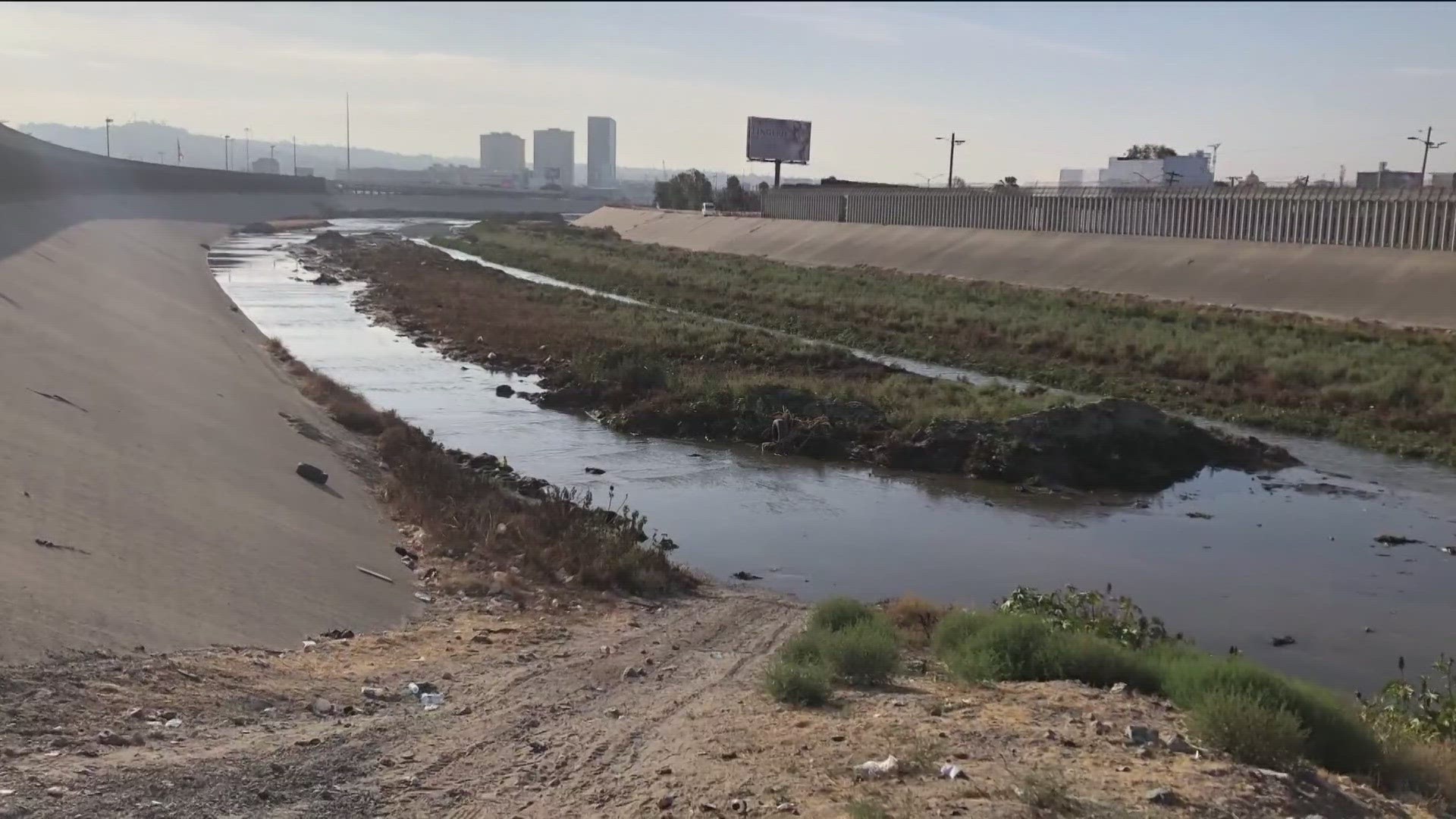CORONADO, Calif. — The San Diego County Air Pollution Control District is putting on a full-court press in the effort to end nasty smells along coastal communities in the South Bay.
A half dozen electronic sensors are being installed at various locations north of the Tijuana River Valley to provide scientific data as to how bad those noxious odors are. The hope is to provide more facts in the battle to secure funds from state and federal governments for clean up.
The first sensor came online a month ago in San Ysidro. Already, there is confirmation that odors are spiking and likely to get worse as winter comes to San Diego.
Raw sewage flowing north through the Tijuana River Valley has been a curse on the South Bay for years. It's a massive problem that has seen little improvement. Now, the Air Pollution Control District of San Diego County has brought in sensors to measure levels of hydrogen sulfide or sewer gas.
Some residents impacted by the sewage spills attended a public hearing at the Coronado Library Wednesday evening to learn how compiling more data on the crisis could help.
David Sodeman is chief of monitoring and technical services for the San Diego County Air Pollution Control District. He told the crowd that hard science may be key to additional funding.
"Unfortunately, local voices hasn't been enough and so we're hoping that bringing that data will help," Sodeman said.
The sensors provide proof that the air is foul; complaints about the smell validated.
"What happens is that during our 21 or 30 days of rain we get a year; that water races to the ocean," said Leon Benham with Citizens for Coastal Conservancy. "So to spread the water over the valley, especially sewage-tainted water, is a disaster and that's what we smell at night!"
His solution is to deepen the valley.
"Restore the valley back to the way it was so there's no standing water," Benham said.
One woman asked if high tide versus low tide could have an impact as well.
"The estuary, once there's no water in it, it's just solid. It's solid that has dropped down and I think that could be a very high correlation," said Imperial Beach resident Viviane Marquez.
One theme seemed to run through the crowd: they want action. Now.
Baron Partlow with Stop the Stink asked, "Is there any plan or program that's compatible with this technology where you can run scenarios of calculated flows from the past with meteorological data to coincide and run a scenario to tell what we were exposed to yesterday, 'cause we're finding out today that we're sick and might die tomorrow?"
A total of six sensors are to be installed in the next few months and there could be more. Data collected will be ammunition in the effort to get state and federal money to fix the problem.
WATCH RELATED: South Bay leaders seek $310 million for Tijuana sewage issues, but will it be enough?

